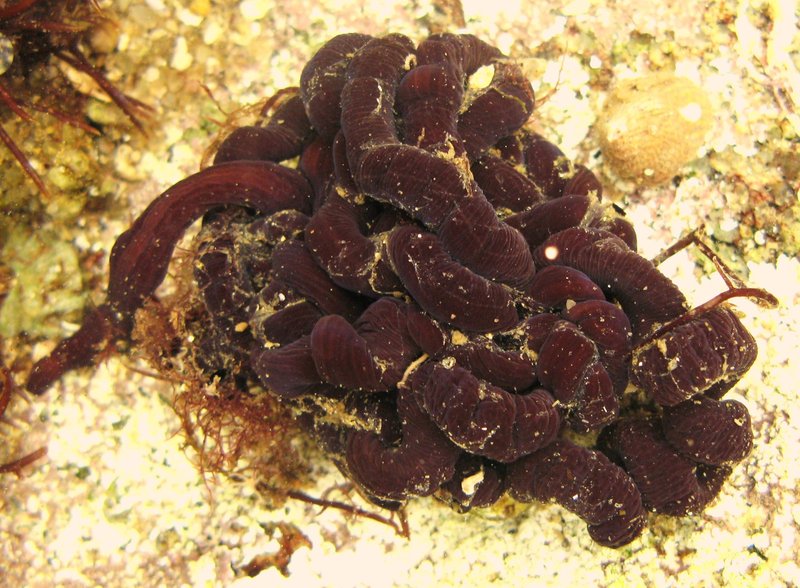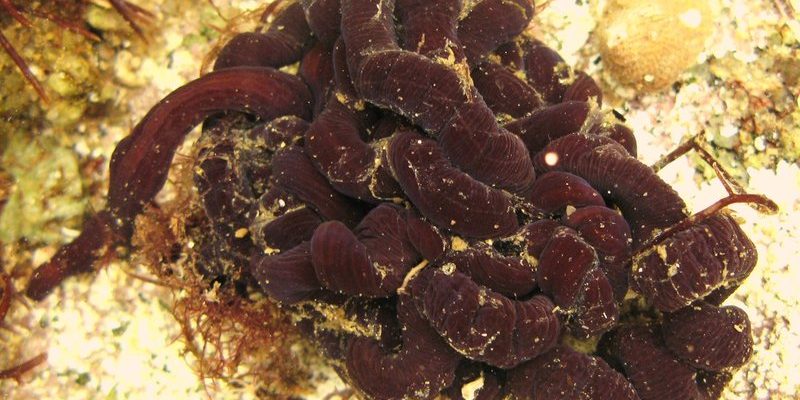
The mucus of bootlace worms isn’t just your average wet stuff—it’s packed with unique properties that help in both hunting and defending against threats. In a world where survival often depends on clever adaptations, the bootlace worm’s slime works as a tool, a trap, and a shield all in one. Curious about how this works? Let’s dive deeper into the world of these amazing creatures and see what their mucus can do!
What Are Bootlace Worms?
Bootlace worms, or *Lineus longissimus*, are among the longest invertebrates on Earth. These guys can stretch up to 30 meters long! You might find them in the sandy substrates of the ocean floor, wigging through the depths like a ribbon in the water. They belong to a group called nemerteans, which are famous for their astonishing flexibility and speed.
What’s fascinating about bootlace worms is not just their length but also their incredible biology. They have a thin and delicate body covered in a soft coating of mucus, which is where their unique abilities start to shine. This mucus isn’t just for show; it’s an essential part of their survival strategy.
The Role of Mucus in Hunting
The mucus produced by bootlace worms acts like an ultra-sticky net. When hunting, these worms secrete this specialized slime to ensnare unsuspecting prey, which typically includes small fish, crustaceans, and other soft-bodied creatures. You might think of it as a clever fishing line, waiting patiently for a catch to come along.
When prey comes in contact with the mucus, it gets stuck, often struggling to escape. This gives the bootlace worm plenty of time to reel in its catch and enjoy a meal. Honestly, it’s a pretty brilliant hunting strategy when you think about it. Instead of chasing down food, the worm lets its mucus do the hard work.
The Composition of Mucus
Now you might wonder, what makes this mucus so special? It’s not just any run-of-the-mill slime; it contains proteins and other compounds that give it a gel-like consistency. This sticky coat has strong adhesive properties, enabling it to capture prey efficiently. Imagine how some plants use sticky nectar to trap insects—bootlace worms are using a similar strategy, just in a more slippery form.
Some studies have even shown that the mucus contains enzymes that can break down the prey’s body, helping the worm digest food more efficiently. It’s like getting a head start on dinner before it’s even caught!
Defense Mechanism: Slime as Armor
Bootlace worms also use their mucus as a defense mechanism. When threatened, they can release a large amount of this slimy substance, turning themselves into a slippery, almost invisible creature in the water. The mucus can make it difficult for predators to get a grip, allowing the worm to escape to safety.
Think about how a fish might slip through your fingers if it’s wet—bootlace worms have mastered this concept. By covering themselves in mucus, they become much harder to catch, which increases their chances of survival when faced with larger predators like fish and birds.
The Chemical Defense
Interestingly, the mucus is also thought to contain chemical compounds that can deter predators. These substances could be harmful or unpalatable, making the worm taste bad or even toxic to its enemies. This double-layered defense of being slippery and potentially toxic is what makes the bootlace worm a clever inhabitant of the ocean.
If you ever find yourself in a marine environment and you spot a bootlace worm, it’s best to admire from a distance. They really know how to protect themselves!
Comparison with Other Marine Animals
When we talk about mucus in the animal kingdom, bootlace worms are not alone. Many marine animals use similar strategies. For example, **sea cucumbers** can expel sticky filaments to deter predators, while **slugs** cover themselves in slime to avoid drying out and to fend off threats.
What makes bootlace worms unique is the sheer volume and effectiveness of their mucus. While other animals might produce a bit of slime here and there, the bootlace worm’s mucus is robust, serving multiple purposes and allowing the worm to thrive in various environments.
Advantages Over Other Defense Mechanisms
Compared to physical defenses like shells or spines, mucus offers bootlace worms a more versatile approach. They can quickly produce slime when needed, and it doesn’t weigh them down. This flexibility not only aids in hunting but also allows them to evade predators more efficiently.
While other marine creatures may rely on hard armor, the bootlace worm’s approach highlights an elegant solution to survival—using what they naturally produce to their advantage. Who knew slime could be such a game changer?
The mucus of bootlace worms is a fantastic example of nature’s ingenuity. From capturing prey to evading predators, this slime does it all. It’s an effective hunting tool and a clever defense mechanism, proving that sometimes, the simplest solutions are the best.
So, the next time you think about worms, remember the bootlace worm and its glorious mucus. It’s a reminder of how evolution has equipped creatures with amazing adaptations to survive in the wild. Whether you’re a marine enthusiast or someone who just loves learning about nature, these slippery wonders show us just how fascinating life can be beneath the waves!

